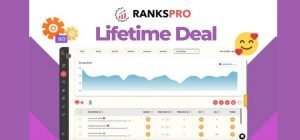Do you realize how valuable your customers’ opinions are? I have learned that their feedback isn’t just random comments—it’s a goldmine of insights waiting to be uncovered. Turning customer feedback into actionable strategies can feel like a challenge, but once you crack the code, it’s a game-changer.
Whether it’s improving a product, fixing a service flaw, or uncovering new opportunities, feedback can guide your next steps. Customer feedback gives you a clear view of what your customers love, what frustrates them, and what they hope to see. When I started acting on feedback in my projects, the results were incredible. One simple change led to higher customer satisfaction and boosted sales.
In this blog, I’ll explore how to turn customer feedback into insights and actionable strategies that help your business grow. So keep reading!

Table of Contents
Why is Customer Feedback Important?
Customer feedback is more than just opinions. It’s a treasure trove of data that can help you:
- Understand your customers better: Feedback shows you what they love and what frustrates them.
- Identify what works and what doesn’t: You’ll uncover strengths to build on and weaknesses to address.
- Improve customer satisfaction: By acting on feedback, you show customers that you value their opinions.
- Stay ahead of competitors: Businesses that adapt to customer needs outperform those that don’t.
According to a HubSpot survey, companies that act on feedback are 21% more profitable. Ignoring feedback can cost you customers, while using it can make your business thrive. Imagine the possibilities when you not only listen but also implement changes that delight your customers.
You May Read Also: Smart Customer Feedback Strategy
How to Collect Customer Feedback?
The first step is gathering feedback. Here are some effective methods:
| Method | Best For |
|---|---|
| Online surveys | Quick, wide-scale feedback |
| Social media polls | Real-time customer thoughts |
| Email questionnaires | Detailed responses |
| Customer interviews | In-depth insights |
For example, I once used an online survey to learn what customers thought about my website. Their responses showed that the checkout process was confusing, so I simplified it. The result? A 15% increase in sales within a month.
Tips for Better Feedback Collection:
- Keep it simple: Short surveys get more responses.
- Use multiple channels: Reach customers where they’re comfortable, like social media or email.
- Ask specific questions: Instead of “What do you think?” ask, “How satisfied are you with our delivery speed?”
Analyzing Customer Feedback
Collecting feedback is just the beginning. Analyzing it is where the magic happens. Here’s how you can do it:
Categorize Feedback
Group feedback into categories like:
- Product Quality
- Customer service
- Pricing
- Suggestions for improvement
This makes it easier to see patterns and prioritize issues. For example, if multiple customers mention slow delivery, you know that logistics needs attention.
Use Technology
Tools like Google Sheets, Zoho Feedback, and SurveyMonkey can help you organize and analyze feedback. For larger data sets, consider AI tools that can identify trends and sentiments. Sentiment analysis tools can even gauge whether feedback is positive, neutral, or negative.
Look for Trends
Are multiple customers mentioning the same issue? That’s a trend worth addressing. For example, if several people say your delivery is slow, it’s time to speed things up. Trends help you focus on the most impactful areas.

Turning Insights into Actionable Strategies
Once you have insights, the next step is action. Here’s how to create strategies that work:
Prioritize Changes
Focus on what will make the biggest impact. Use a simple table like this:
| Feedback Issue | Impact Level | Effort Required | Priority |
| Slow delivery | High | Medium | 1 |
| Lack of payment options | Medium | Low | 2 |
| Outdated website | Low | High | 3 |
Prioritizing ensures you tackle the most pressing issues first, making the best use of your resources.
Develop a Plan
Create a step-by-step plan to address each issue. For example:
- Train delivery staff to improve speed.
- Add new payment methods.
- Redesign the website with customer feedback in mind.
Test and Measure Results
After implementing changes, test their effectiveness. Did customer satisfaction improve? Did sales increase? Keep measuring results to ensure your strategies are working. For example, after adding more payment options, you might notice a rise in completed purchases.
Take Amazon, for instance. They constantly gather feedback through reviews and emails. When customers said they wanted faster shipping, Amazon introduced Prime. This move not only satisfied customers but also increased revenue significantly. Their ability to adapt to customer needs is a big reason for their success.

Avoid These Common Mistakes
- Ignoring Negative Feedback: Don’t shy away from criticism. It’s a chance to improve. Use negative feedback as a tool to identify weaknesses and address them.
- Not Acting Quickly: Delayed responses can frustrate customers. Quick action shows that you value their input.
- Overcomplicating the Process: Keep feedback collection and analysis simple. Overwhelming customers with too many questions or processes can discourage them.
Benefits of Using Customer Feedback
- Improved Products: Feedback highlights areas for improvement, helping you refine your offerings.
- Better Customer Relationships: Customers feel valued when their voices are heard. This builds trust and loyalty.
- Increased Revenue: Happy customers spend more and are likely to recommend your business to others.
Frequently Asked Questions About Turning Feedback into Insights
How can I encourage customers to give feedback?
Make it easy and rewarding. Use simple forms, and consider offering discounts or freebies for their time.
What tools can I use to analyze feedback?
Tools like Google Sheets, SurveyMonkey, and AI sentiment analysis platforms can help you organize and interpret data effectively.
How often should I collect feedback?
Regularly, but don’t overdo it. After major purchases, once every quarter, or during key milestones works well.
How do I handle negative feedback?
Stay calm and thank the customer. Use their input to identify areas for improvement and take action quickly.
Can small businesses benefit from a feedback strategy?
Absolutely! Even simple methods like suggestion boxes or casual chats with customers can provide valuable insights.
Final Thoughts
Turning customer feedback into actionable strategies isn’t just about listening. It’s about acting. Start small, but start now. Collect, analyze, and act. Your customers will notice the difference, and so will your bottom line.
Do you think these tips could work for your business? Try them out and share your experience. Remember, feedback isn’t just a comment; it’s a gift.
This post contains affiliate links. I may earn a commission if you make a purchase through them, at no extra cost to you.








